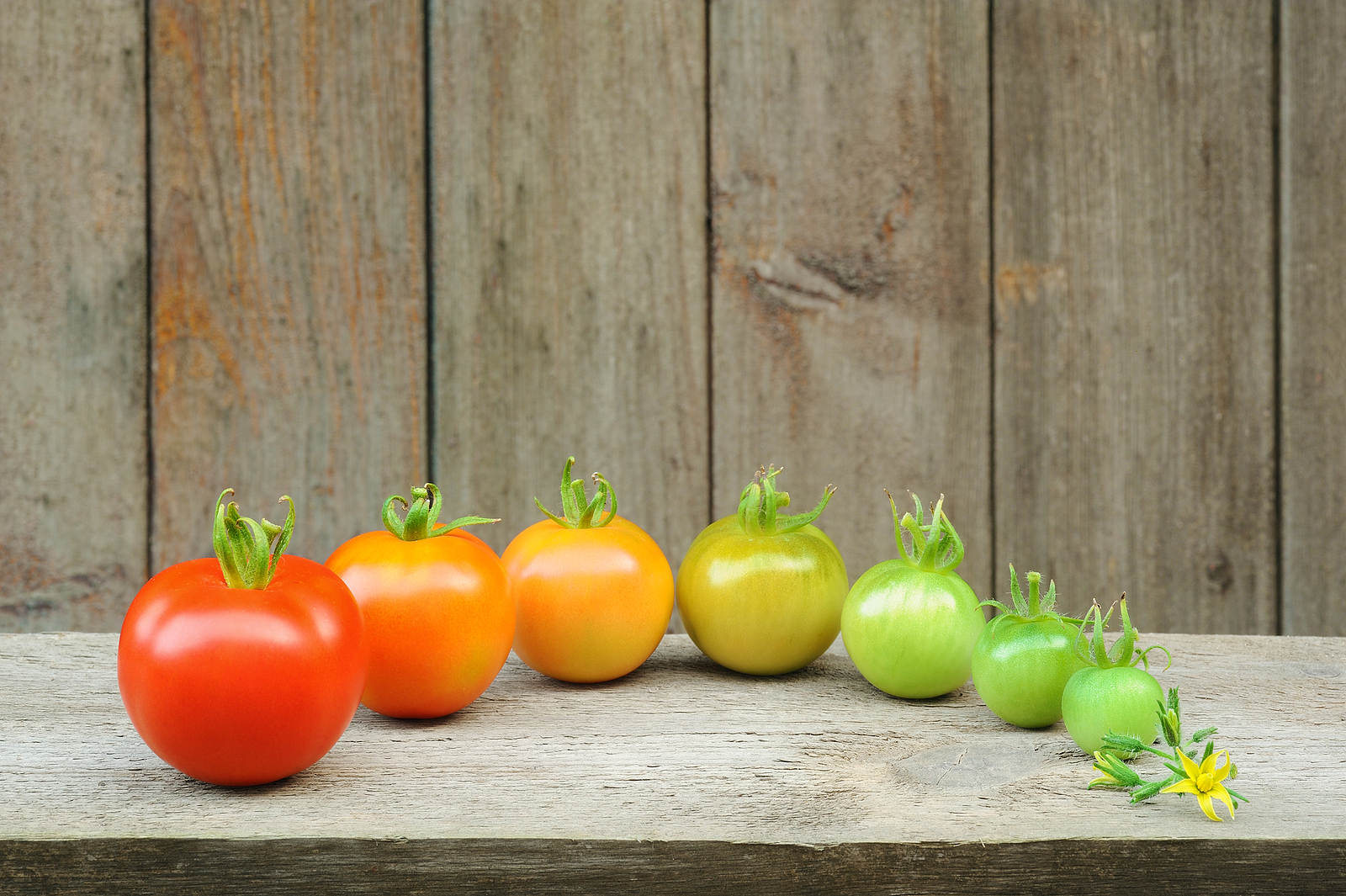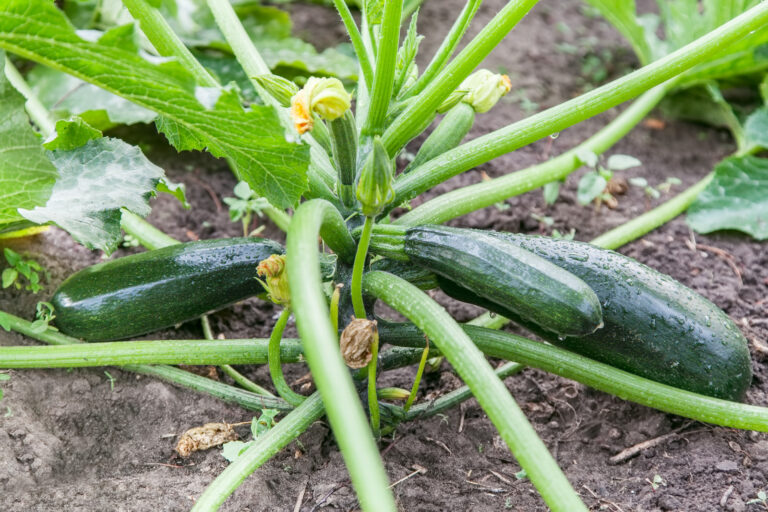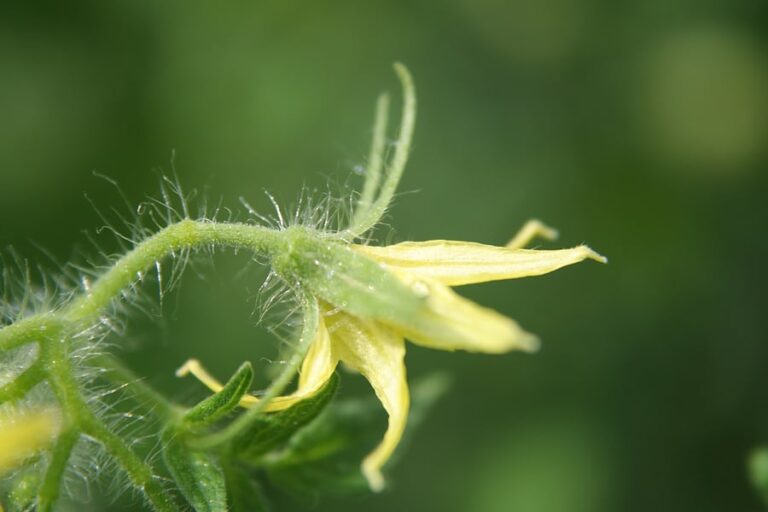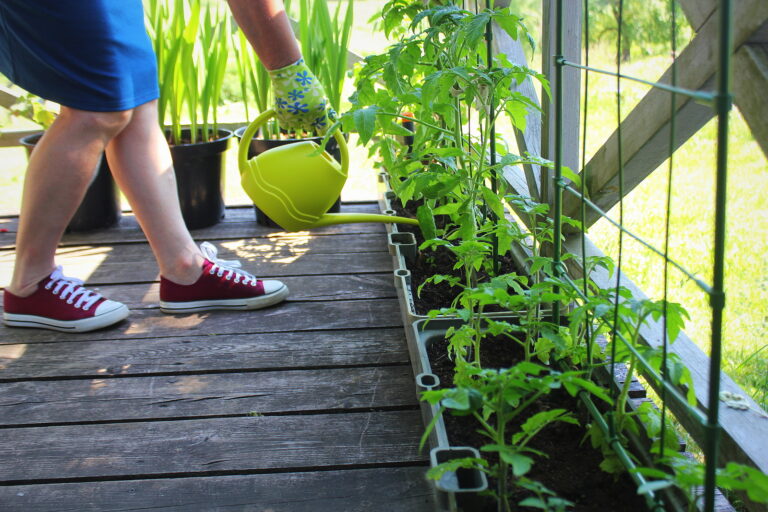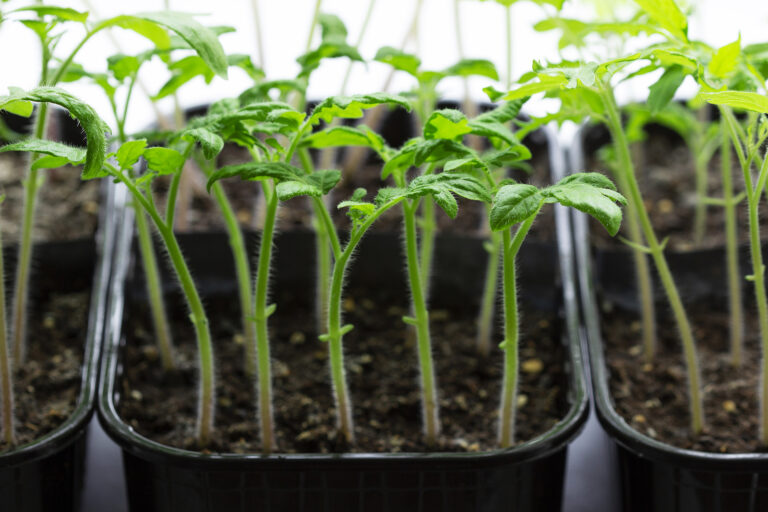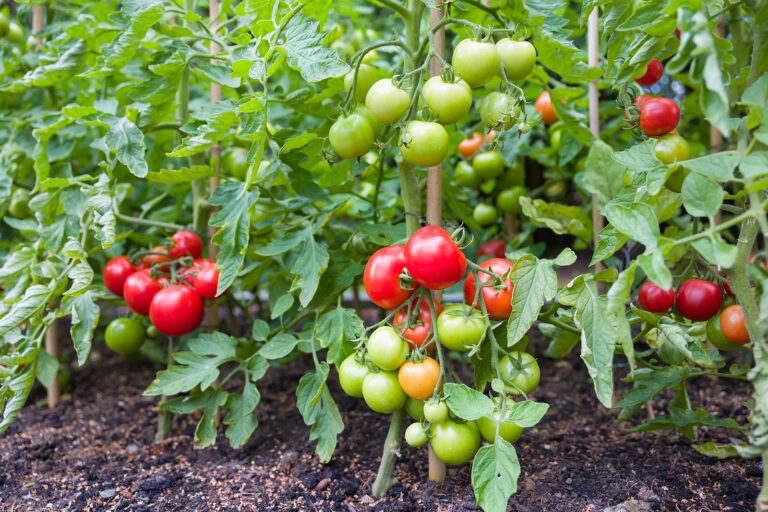How to Choose the Right Tomato for Your Garden and Kitchen
Choosing the right tomato for your garden isn’t just about picking any variety off the shelf—it’s about matching the plant to your growing conditions, kitchen needs, and harvest goals. After years of trial and error in my own garden, I’ve learned that selecting the best tomato variety makes all the difference in both yield and flavor. Whether you’re looking for a sweet cherry tomato to snack on, a meaty paste tomato for sauces, or a classic slicing tomato for fresh summer sandwiches, understanding the different types of tomatoes can help you grow a more productive and satisfying crop. In this guide, I’ll share practical tips from firsthand experience to help you choose the perfect tomato variety for your garden and your table.
With thousands of tomato varieties available, choosing the right one for your garden can feel overwhelming. Over the years, I’ve learned that the best way to pick the perfect tomato is to consider not just flavor but also how you plan to use it in the kitchen, your growing conditions, and the length of your season. Whether you’re looking for juicy slicing tomatoes, sweet cherry tomatoes, or rich paste tomatoes for sauces, there’s a perfect variety for every gardener.
Selecting Tomatoes for Your Needs
The first step in choosing a tomato variety is to decide how you’ll use them:
- For fresh eating: Choose beefsteak, slicing, or cherry tomatoes like ‘Brandywine,’ ‘Cherokee Purple,’ or ‘Sungold.’
- For canning: Standard globe-shaped tomatoes such as ‘Rutgers’ or ‘Bonny Best’ hold up well in jars.
- For cooking and sauces: Opt for paste tomatoes like ‘San Marzano’ or ‘Roma,’ which have thick flesh and fewer seeds.
Choosing a Tomato Based on Your Growing Season
Tomatoes vary in how long they take to mature. Consider your climate and growing season before selecting a variety:
- Early-season (50-60 days): Ideal for short summers or cooler regions. Try ‘Early Girl’ or ‘Stupice.’
- Main crop (70-85 days): Great for most gardens with warm summers. ‘Better Boy’ and ‘Celebrity’ are reliable choices.
- Late harvest (85+ days): These take longer but reward you with exceptional flavor. ‘Brandywine’ and ‘Mortgage Lifter’ fall into this category.
Determinate vs. Indeterminate: Choosing the Right Growth Habit
Tomatoes grow in two different ways, and choosing the right type depends on your space and gardening style:
- Determinate (Bush tomatoes): These grow to a compact size and produce a concentrated harvest, making them great for small gardens, containers, or short-season growing. Try ‘Patio Princess’ or ‘Roma.’
- Indeterminate (Vining tomatoes): These grow continuously and produce fruit all season long. They require staking or caging but offer a steady harvest. Great choices include ‘Cherokee Purple’ and ‘Sweet Million.’
Understanding Tomato Terminology
Tomato descriptions often use terms that can be confusing. Here’s a quick breakdown:
- Cherry or miniature tomatoes: Small, bite-sized tomatoes perfect for salads and snacking.
- Slicing tomatoes: Larger varieties used on sandwiches, burgers, or fresh eating.
- Cooking tomatoes: Paste or plum tomatoes with thick flesh, ideal for sauces and canning.
Choosing the right tomato means thinking about your gardening conditions, how you want to use them in the kitchen, and how much space you have. With the right variety, you’ll enjoy a bountiful harvest of delicious, homegrown tomatoes all season long! 🍅
Key Terms and Vocabulary for Tomato Growers
There are more than 1,000 varieties of tomatoes.
In the kitchen there are three major tomato categories based on use: (1) cherry or miniature tomatoes used for salads and snacking; (2) slicing and eating tomatoes used on sandwiches and hamburgers as well as eaten out of hand, and (3) cooking tomatoes for canning and sauces.
Here is a tomato vocabulary, common types, labels, and tomato descriptors you will find referenced in seed catalogs and at the farmers’ market.
- Beefsteak tomato: a large tomato that can be eaten raw or cooked. These are large, bright red tomatoes with a slightly elliptical shape. The beefsteak is the classic sandwich or hamburger tomato. It is so large and juicy with such a large seed cavity that it usually does not hold its shape when cooked.
- Bicolored tomato: a two-colored, usually striped tomato. Bicolored tomatoes are often heirloom varieties.
- Black tomato: a black or deep-purple-skinned tomato variety. Black tomato varieties include ‘Black Cherry’, and the globe tomatoes ‘Black Krim’ and ‘Black Russian’.
- Cherry tomato: a small tomato about 1 inch (2.5 cm) in diameter, red or yellow-gold in color for snacking, adding to salads, or eating raw. Also, use the cherry tomato as a garnish. It has excellent flavor.
- Cool-summer tomato: a tomato variety that will ripen where the accumulated heat over the course of the growing season is too low for most tomatoes. Cool-summer tomatoes are suited for cool-summer regions. Cool-summer tomato varieties include ‘San Francisco Fog’, ‘Oregon Pride’, and ‘Seattle Best of All’.
- Currant tomato: a very small tomato, smaller than a cherry tomato, about ½ to ¾ inches (13-19 mm) in diameter, and weighs about ⅛ ounce. Currant tomatoes are sometimes called “mini cherry tomatoes.” Currant tomatoes are usually red or yellow and are sweet and crisp for snacking or using on salads.
- Early tomato: a tomato variety that sets fruit at lower night temperatures than a main crop tomato. Early tomato varieties are grown in short-season regions and often in high-elevation areas. Early tomato varieties include ‘Early Girl’. ‘Burpee’s Early Pick’, ‘Quick Pick’, and ‘Stupice’.
- Globe tomato: a medium-sized, round, usually red tomato that is firm and juicy. The globe tomato is similar to the beefsteak tomato but smaller. It is good raw for slicing and eating out of hand and cooked.
- Grape tomato: an elliptical, egg- or pear-shaped tomato about the size of a grape. The grape tomato can be a baby Roma or a variety such as ‘Juliet’ which produces grapelike clusters of small fruit. The Roma is a tomato variety that is meaty, with few seeds, red or yellow, and most often used as a canning or sauce tomato.
- Green tomato: tomato varieties that are green when mature. Some green tomato varieties are globe tomatoes and some are beefsteak. These tomatoes have a piquant flavor and are best used for frying, broiling, and adding to relishes. Green tomato varieties include ‘Aunt Ruby’s German Green’, ‘Emerald Evergreen’, and ‘Green Bell Pepper’.
- Hawaiian tomato: a tomato variety developed for growing especially in Hawaii where many tomato diseases flourish. Hawaiian tomato varieties include ‘Anahu’, ‘Healani’, ‘Kalohi’, and ‘Puunui’.
- Heirloom tomato: an old–more than 50 years–tomato variety. Heirloom tomatoes vary in size and appearance. Many heirloom tomato varieties have been in cultivation for hundreds of years. Heirloom tomatoes come in a rainbow of colors, textures, and tastes. Most are the size and shape of a globe or beefsteak tomato.
- Hybrid tomato: first-generation tomatoes from controlled parent lines. Hybrids grow to a uniform size and often are very similar in quality. The seeds of hybrid tomatoes do not breed true.
- Hydroponic tomato: a tomato grown in water without soil in a greenhouse. Hydroponic tomatoes often lack flavor.
- Large-fruited tomato: a tomato variety that grows a large tomato. Large-fruited tomato varieties include ‘Beefsteak’, ‘Beefmaster’, ‘Big Beef’, and ‘Burpee’s Supersteak Hybrid’. Large-fruited tomatoes are often used for slicing.
- Main crop tomato: a tomato variety that grows to full size in regions where the days and nights are warm and well-suited for tomato growing. ‘Celebrity’, ‘Big Boy’, and ‘Better Boy’ are main-crop tomatoes. Main crop tomatoes are also called standard tomatoes.
- Orange tomato: an orange-skinned tomato variety. Orange tomato varieties include ‘Amana Orange’, ‘Ida Gold’, and ‘Orange Jubilee’.
- Paste tomato: small, oval, thick-meated tomato with the maximum amount of flesh and virtually no seed cavity. Paste tomatoes are used to make tomato paste or for sun-drying. Paste tomatoes are sometimes called plum tomatoes.
- Pear tomato: smaller than a cherry tomato, egg- or pear-shaped, and looks like a small plum tomato. The pear tomato is used like a cherry tomato for snacking or on salads.
- Pink tomato: a pink-skinned tomato variety. ‘Brandywine’ and ‘New Big Dwarf’ are beefsteak-size tomatoes with pinkish-colored skins. ‘Dwarf champion’, ‘Giant Belgium Pink’, and ‘Pink Beefsteak’ are globe-sized pink tomatoes.
- Plum tomato: also called Italian plum tomato and Roma tomato. The plum tomato is egg-shaped, red or yellow, and flavorful. The plum tomato can be 2 to 4 inches (5-10 cm) long and 1 to 2 inches (2.5-5 cm) in diameter. The plum tomato is thick and meaty, not juicy, and contains few seeds. It is sometimes called a paste tomato.
- Purple tomato: an heirloom tomato with purple skin. Purple-skinned tomato varieties include ‘Purple Calabash’, ‘Brandywine’, and ‘Cherokee Purple.’ Purple tomatoes can be dusky pink with purple shoulders to dusky rose-purple all over. Purple tomatoes are usually the size of a globe or beefsteak tomato.
- Roma tomato: a tomato variety that is meaty, with few seeds, red or yellow, and most often used as a canning or sauce tomato.
- Round tomato: a globular or oval tomato 2 to 5 inches (5-13 cm) in diameter, usually red, pink, orange, yellow, or green colored. The round or common round tomato is usually firm and juicy and used for slicing, eating out of hand, or cooking.
- Sauce tomato: usually plum tomato, Roma tomato, Italian tomato, or paste tomato. Sauce tomatoes are usually egg-shaped with thick meat and few seeds. Sauce tomatoes are excellent for sauce making. Their thick flesh holds shape when cooked and canned.
- Slicing tomato: a large slightly squat-shaped tomato used for slicing. The large seed cavity of the slicing tomato contains lots of juice. The beefsteak tomato is a slicing tomato, up to 6 inches (15 cm) in diameter. The slicing tomato is used raw, not cooked.
- Standard tomato: a main crop tomato variety suited for growing in warm weather regions. See “Main crop tomato.”
- Striped tomato: a tomato striped, sometimes red and yellow, sometimes red and green, sometimes red and white, as well as other colors. Striped tomatoes are often heirloom tomato varieties. Striped tomato varieties include ‘Marvel Striped’, ‘Big White Pink Stripe’, ‘Hillbilly’, ‘Green Zebra’, and ‘Mister Stripey’.
- Sun-dried tomato: a tomato that has been dried in the sun or in a tomato dryer. Sun-dried tomatoes are usually chewy, sweet-flavored, and dark red. They are used to flavor sauces, soups, sandwiches, salads, and other dishes.
- White tomato: a tomato variety that has white skin. White tomato varieties include ‘White Queen’, ‘White Wonder’, and ‘Snow White Cherry’.
- Yellow cherry tomato: the same size as its red counterpart but slightly less acidic and usually blander in flavor. Cook the yellow cherry tomato as a side dish or sauté it with herbs.
- Yellow pear tomato: the yellow version of the pear tomato: is slightly smaller than a cherry tomato and resembles a tiny pear. The yellow pear tomato may be blander tasting than the red pear tomato.
- Yellow tomato: a yellow-skinned tomato variety. Yellow tomato varieties include ‘Azoychka’, ‘Banana Legs’, ‘Garden Peach Tomato’, and ‘Yellow Brandywine’.
Beefsteak tomato varieties to grow
- ‘Big Beef’ is a great beefsteak, flavorful and consistent.
- ‘Brandywine’ is many-colored– pink or yellow or purple-black. It tops many tomato flavor lists.
- ‘Cherokee Purple’ and ‘Black Krim’ are purple beefsteaks.
- ‘Beefmaster’, ‘Big Bite’, ‘Heavy Weight’, ‘Goliath’, and ‘Watermelon’ are descriptive names of beefsteak varieties.
- Mortgage Lifter’ is the best beefsteak for storytelling. During the Big Depression, a West Virginia farmer by the name of Mr. Byles was about to lose the farm. Farmer Byles crossed several fat beefsteaks until he came up with a new beefsteak variety so big and so flavorful that his tomato sales paid off the mortgage, the ‘Mortgage Lifter.’
About beefsteak tomatoes
- The beefsteak tomato is more than a variety of tomatoes; it is many varieties (dozens) and a class of tomatoes. Beefsteaks are one of the largest varieties of tomatoes growing. Some easily weigh more than 2 pounds (1 kilogram)
- Beefsteak tomatoes come in a rainbow of colors: red, pink, yellow, orange, green, and purple-black for starters.
- Beefsteaks are not round; they’re fat and saucer-shaped in a squatty sort of way. Oblate is a descriptor for the beefsteak.
- Slice a beefsteak and you will find a tomato filled (filled!) with lush seed cavities (many). There’s no core as you might find in smaller slicing tomatoes. The beefsteaks’ seedy interior maze is Byzantine but an architecture of amazing strength. The beefsteak is made for slicing and eating raw and staying together.
Tomato Growing Hub
Start here: The Ultimate Tomato Growing Guide: From Seed to Harvest
Growing Tips
- Getting Started with Tomatoes: A Gardener’s Guide to Success
- How to Choose a Tomato for Your Garden
- How to Choose the Right Tomato for Your Garden and Kitchen
- Growing Early-Season Tomatoes for Great Taste
- Heirloom and Hybrid Tomatoes
Planting Tips
- Tomato Seed Starting Tips
- Mastering Tomato Seed Starting: How to Grow Strong and Healthy Plants Indoors
- When to Plant Tomatoes: A Gardener’s Guide to Timing and Success
- Plant Tomatoes for a Thriving Crop: Sun, Soil, and Spacing
- How to Transplant Tomato Seedlings: A Gardener’s Guide
- Growing Tomatoes in Containers
Tomato Care
- Watering and Feeding Tomatoes: Expert Tips for a Healthy, Productive Crop
- Best Ways to Support Your Tomato Plants
- Pinching and Pruning Tomatoes: A Gardener’s Guide to Healthier, More Productive Plants
- How to Prune Tomatoes
- Grow Tomatoes on Stakes
- Best Companion Plants for Thriving Tomatoes: What Works & What to Avoid
Pest & Disease Control
- Tomato Growing Problems: Pests, Diseases, and Solutions
- How to Prevent Blossom Drop — Tomatoes and Peppers
- How to Identify Early Blight, Late Blight, and Leaf Spot on Tomatoes
Harvest & Preparation
- When and How to Harvest Tomatoes for the Best Flavor
- How to Ripen Tomatoes
- Planting Tomatoes for a Long Harvest
- Planting Tomatoes for a Fall Harvest: How to Grow Fresh Tomatoes Before Frost
- Tomato Flavor Explained
- Nine Ways to Cook and Serve Tomatoes
Garden Planning Books at Amazon:
- Tomato Grower’s Answer Book
- Vegetable Garden Almanac & Planner
- Kitchen Garden Grower’s Guide Vegetable Encyclopedia
- Vegetable Garden Grower’s Guide
Books to help you grow:

